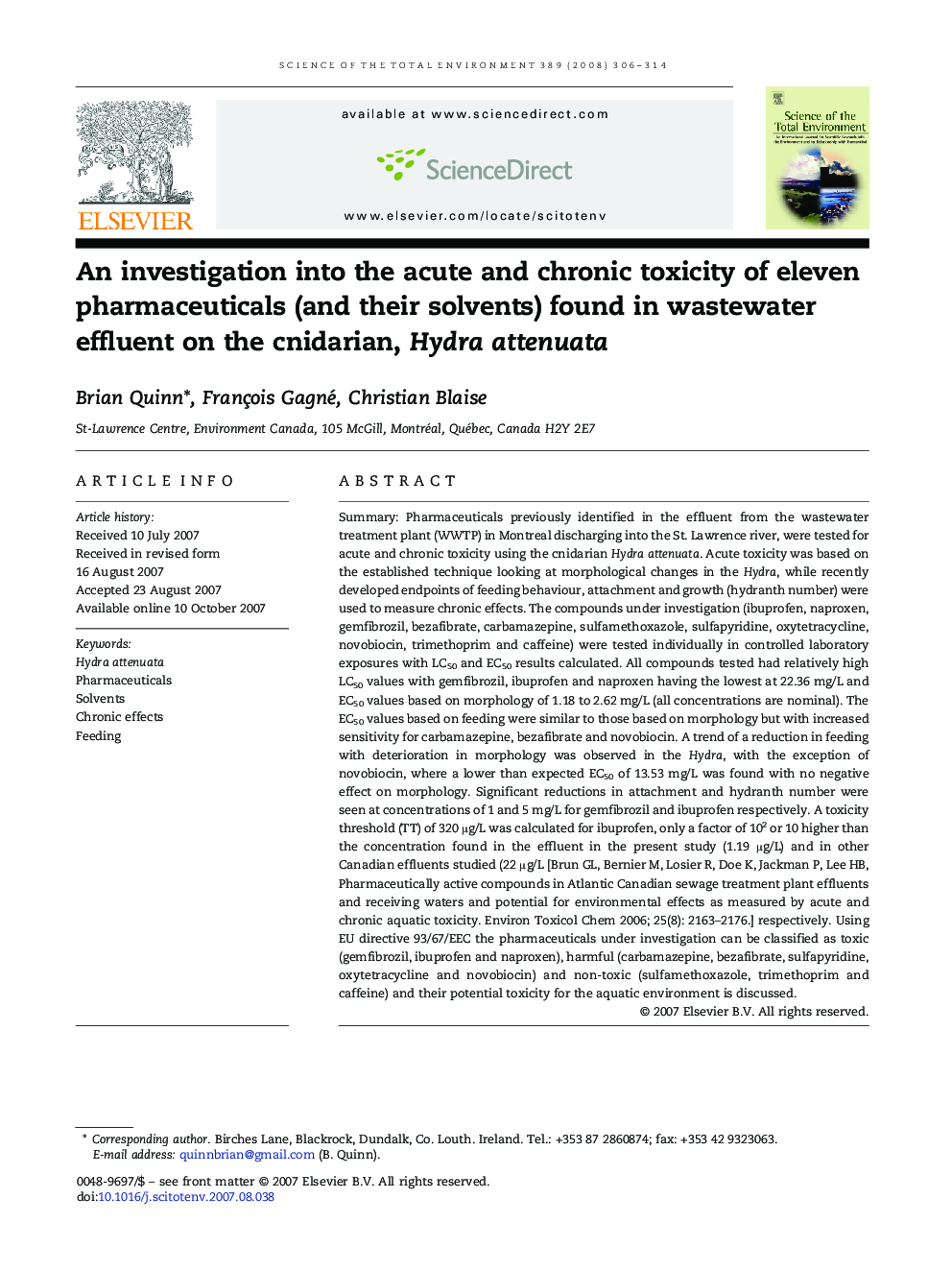| کد مقاله | کد نشریه | سال انتشار | مقاله انگلیسی | نسخه تمام متن |
|---|---|---|---|---|
| 4432715 | 1619937 | 2008 | 9 صفحه PDF | دانلود رایگان |

Summary:Pharmaceuticals previously identified in the effluent from the wastewater treatment plant (WWTP) in Montreal discharging into the St. Lawrence river, were tested for acute and chronic toxicity using the cnidarian Hydra attenuata. Acute toxicity was based on the established technique looking at morphological changes in the Hydra, while recently developed endpoints of feeding behaviour, attachment and growth (hydranth number) were used to measure chronic effects. The compounds under investigation (ibuprofen, naproxen, gemfibrozil, bezafibrate, carbamazepine, sulfamethoxazole, sulfapyridine, oxytetracycline, novobiocin, trimethoprim and caffeine) were tested individually in controlled laboratory exposures with LC50 and EC50 results calculated. All compounds tested had relatively high LC50 values with gemfibrozil, ibuprofen and naproxen having the lowest at 22.36 mg/L and EC50 values based on morphology of 1.18 to 2.62 mg/L (all concentrations are nominal). The EC50 values based on feeding were similar to those based on morphology but with increased sensitivity for carbamazepine, bezafibrate and novobiocin. A trend of a reduction in feeding with deterioration in morphology was observed in the Hydra, with the exception of novobiocin, where a lower than expected EC50 of 13.53 mg/L was found with no negative effect on morphology. Significant reductions in attachment and hydranth number were seen at concentrations of 1 and 5 mg/L for gemfibrozil and ibuprofen respectively. A toxicity threshold (TT) of 320 μg/L was calculated for ibuprofen, only a factor of 102 or 10 higher than the concentration found in the effluent in the present study (1.19 μg/L) and in other Canadian effluents studied (22 μg/L [Brun GL, Bernier M, Losier R, Doe K, Jackman P, Lee HB, Pharmaceutically active compounds in Atlantic Canadian sewage treatment plant effluents and receiving waters and potential for environmental effects as measured by acute and chronic aquatic toxicity. Environ Toxicol Chem 2006; 25(8): 2163–2176.] respectively. Using EU directive 93/67/EEC the pharmaceuticals under investigation can be classified as toxic (gemfibrozil, ibuprofen and naproxen), harmful (carbamazepine, bezafibrate, sulfapyridine, oxytetracycline and novobiocin) and non-toxic (sulfamethoxazole, trimethoprim and caffeine) and their potential toxicity for the aquatic environment is discussed.
Journal: Science of The Total Environment - Volume 389, Issues 2–3, 25 January 2008, Pages 306–314